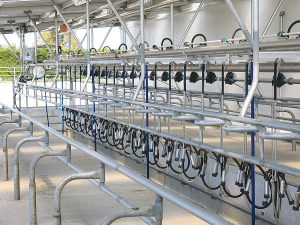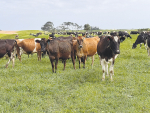Machine cleaning systems maintain milk quality by aiming to remove all milk residues from the plant and destroying any resident bacteria.
The benefits of selecting the right cleaning system include:
Increased milking efficiency: installing a well designed system will ensure efficient operation.
Reduced costs: installing the right system will keep operating costs to a minimum.
Automation of the cleaning process can be advantageous as it provides consistency of operation, eliminates human error, and prevents health and safety issues associated with handling strong chemicals and hot water.
If the cleaning process is automated the operator needs to periodically check the automation to ensure the plant is cleaning properly.
An easy-to-operate method of cleaning the pit and milking platform is essential. Some larger dairies are installing automatic washing systems on their milking platforms. This is especially useful if the dairy is used for long periods of time.
Features of a cleaning system
A cleaning system should have the following features
Adequately sized and configured wash line.
Minimum flow rate of 3 litres per minute per cluster.
Flow rate through the first jetter should not greatly exceed the last.
A flushing pulsator/air injector may be installed at the end of the milk line to ensure it is cleaned effectively. If the milk line is a loop line then a tap is installed near one of the milk line entries to the receiver with a flushing pulsator/air injector installed before the tap, at the top of the milk line. During washing the tap is closed and the flushing pulsator/air injector turned on.
Cause minimal liner stretch and distortion.
A high flow, rapid dump hot water service to save time filling drums.
Ensure liners and jetters are compatible.
Circulation cleaning systems
This type of system is recommended for all dairies.
At the completion of milking, the clusters are connected to ‘jetters’ that are in turn connected to a wash line.
When the milking plant is turned on the vacuum created by the plant draws water from the wash tub through the wash line.
When hot washing, the water should be circulated through the plant for 5-7 minutes, or until it reaches the minimum dump temperature (about 55°C). This is done by connecting a recycle line from the delivery line to the wash tub.
To ensure effective cleaning a minimum water flow of 3 L/min is required through each cluster.
To clean the milk line effectively a flushing pulsator/air injector is normally needed. The flushing pulsator injects air and water into the milk line every 30-45 seconds. This injection of water and air creates a turbulent flow of wash water through the milk line which helps to effectively clean the milk line.


















